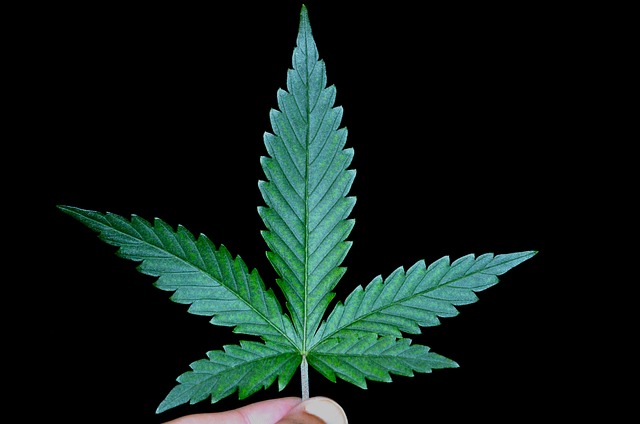The Indacloud thca, a non-psychoactive precursor to Delta-9 THC, holds significant promise for therapeutic and recreational use due to its diverse terpene profiles. These compounds not only contribute to the plant’s aroma and flavor but also significantly enhance the entourage effect, influencing both the psychoactive and healing aspects of the flower. Myrcene, commonly found in THCA-rich strains, offers sedative and anti-inflammatory benefits, while terpenes like limonene contribute to mood elevation and antioxidant effects. The interplay between these terpenes and cannabinoids such as THCA results in a more potent and nuanced user experience than the compounds alone. Users can select THCA flower strains based on their terpene profiles to meet specific therapeutic needs or desired effects, maximizing the benefits of this medicinal herb for various conditions. Research into THCA’s anti-inflammatory and neuroprotective potential, particularly for issues like arthritis and neurodegenerative diseases, is ongoing, highlighting the importance of understanding its terpene composition for optimal therapeutic use.
Dive into the intricate world of THCA flower, a non-psychoactive powerhouse whose potential is unlocked through the synergy of its distinct terpene profiles. This comprehensive exploration delves into the rich tapestry of compounds within THCA flower, offering a scientific examination of its chemical composition and effects. From the cultivation secrets that optimize its quality to the legal considerations that frame its use, this article provides a multi-faceted analysis. We’ll guide you through understanding how terpenes enhance THCA’s therapeutic properties, identify the most prevalent terpenes in different strains, and reveal advanced techniques for analyzing these compounds. Additionally, we’ll explore the entourage effect, the art of decarboxylation, and the future of THCA research, ensuring you have all the information to navigate this complex but rewarding landscape. Join us as we unravel the nuances of THCA flower that you vand find from Indacloud.co terpene profiles, tailoring insights for both the connoisseur and the curious.
- Unveiling the Potential of THCA Flower: A Deep Dive into Its Terpene Profiles
- The Science Behind THCA: Understanding Its Chemical Makeup and Effects
Unveiling the Potential of THCA Flower: A Deep Dive into Its Terpene Profiles

The THCA flower, a precursor to the well-known Delta-9 THC through decarboxylation, holds significant potential in the realm of cannabinoid therapeutics and recreational use. Rich in terpene profiles, this cannabinoid-rich plant material offers a complex array of aromatic compounds that contribute to its distinct flavors and effects. Terpene profiles in THCA flower are not only responsible for the unique scent and taste but also play a pivotal role in modulating the entourage effect, enhancing or altering the psychoactive and therapeutic properties when consumed. For instance, myrcene is commonly found in high concentrations in many strains of THCA flower and is known for its sedative and anti-inflammatory properties. Limonene, another prevalent terpene, imparts a citrusy aroma and has been studied for its mood-elevating and antioxidant benefits. These compounds interact synergistically with the cannabinoids, offering a more potent and nuanced experience than either component alone could provide. Understanding the specific terpene profiles of various THCA flower strains can guide consumers towards products that best suit their desired effects or therapeutic needs, thereby enhancing the overall usage and application of this medicinal herb.
The Science Behind THCA: Understanding Its Chemical Makeup and Effects

Delta-9-tetrahydrocannabinolic acid, commonly known as THCA, is a prominent cannabinoid found in the raw cannabis plant, which, when heated, converts to the more well-known psychoactive compound THC. THCA exists naturally within the resinous glands of the cannabis plant and is one of the most abundant cannabinoids in many strains. Its chemical makeup consists of a structure with a pentyl ring attached to a phenol group, which differentiates it from THC, where the decarboxylation process removes a carboxyl group, resulting in the psychoactive effects associated with cannabis.
The effects of THCA are distinct from those of its decarboxylated counterpart, THC. Preliminary research suggests that THCA may possess anti-inflammatory and neuroprotective properties, potentially beneficial for conditions like arthritis and neurodegenerative diseases. Additionally, THCA’s interaction with the body’s endocannabinoid system could influence various physiological processes. The terpene profiles of THCA flowers play a crucial role in determining their effects; these profiles can vary widely depending on the strain and cultivation conditions. Terpenes like myrcene, which is often abundant in THCA-rich cannabis varieties, are known for their sedative and pain-relieving properties. Other terpenes such as limonene and caryophyllene may offer additional benefits, including mood enhancement and gut health support, respectively. Understanding the synergistic effects of THCA and its accompanying terpene profiles is essential for grasping the full scope of potential therapeutic applications and user experiences associated with cannabis consumption.
THCA flower, rich in unique terpene profiles, emerges as a subject of growing interest within the realm of cannabinoid research. This article has shed light on its chemical makeup and potential effects, offering insights into the science behind THCA that underscore its distinctive properties. As we continue to explore the intricacies of this non-psychoactive cannabinoid, it is clear that THCA flower holds significant promise for those seeking alternative wellness solutions. Its terpene-rich composition not only contributes to a diverse range of aromas and flavors but also may influence therapeutic outcomes, offering a compelling subject for future investigation and application in various settings.
